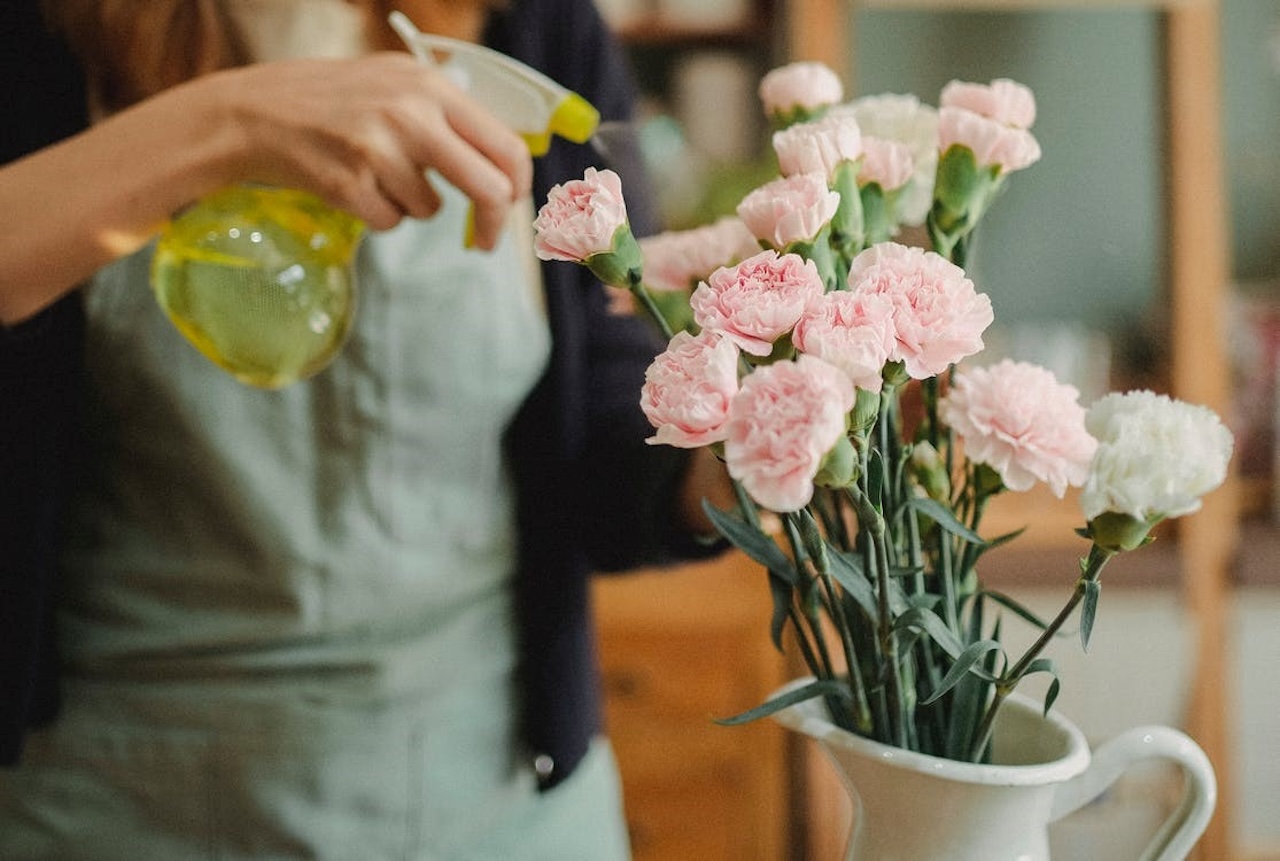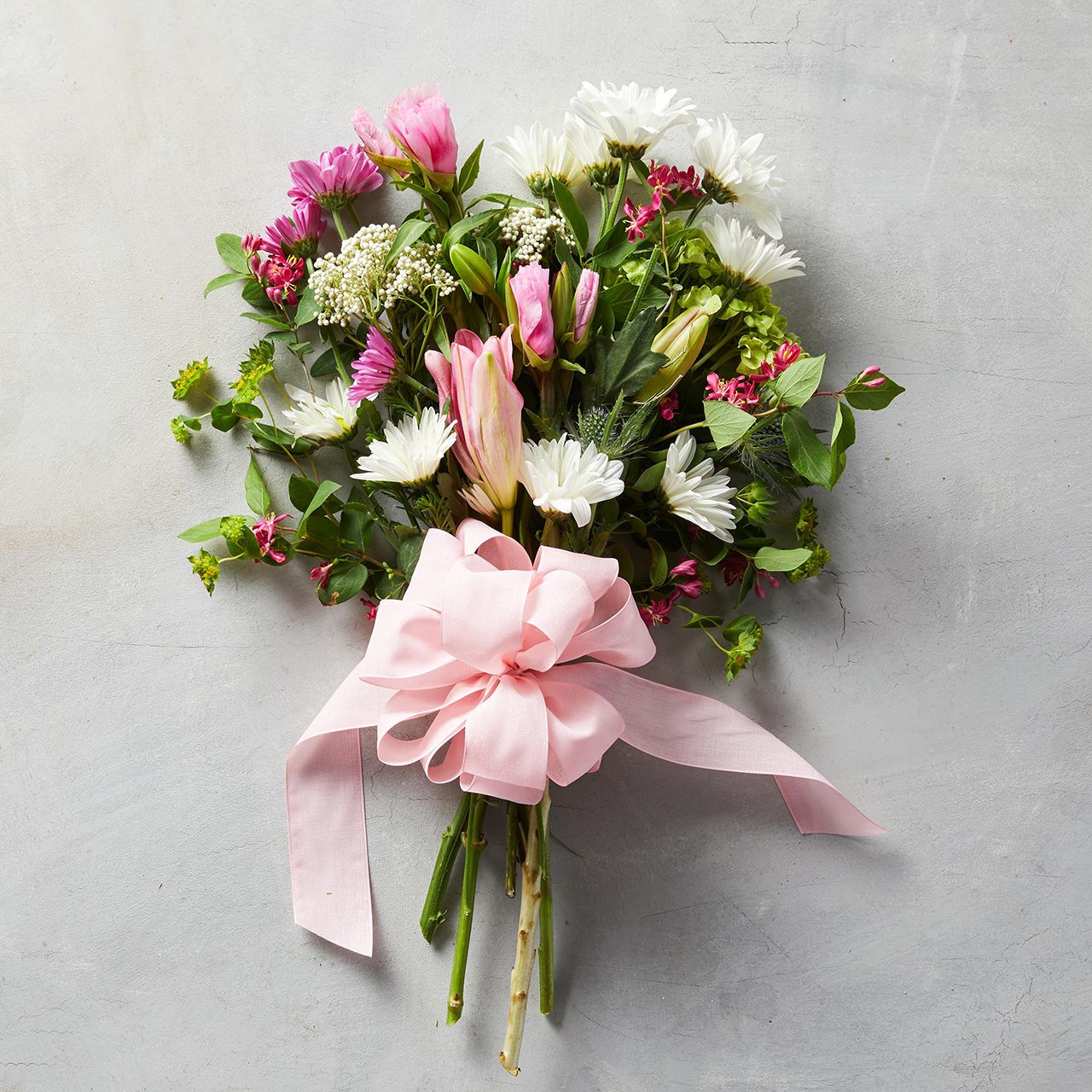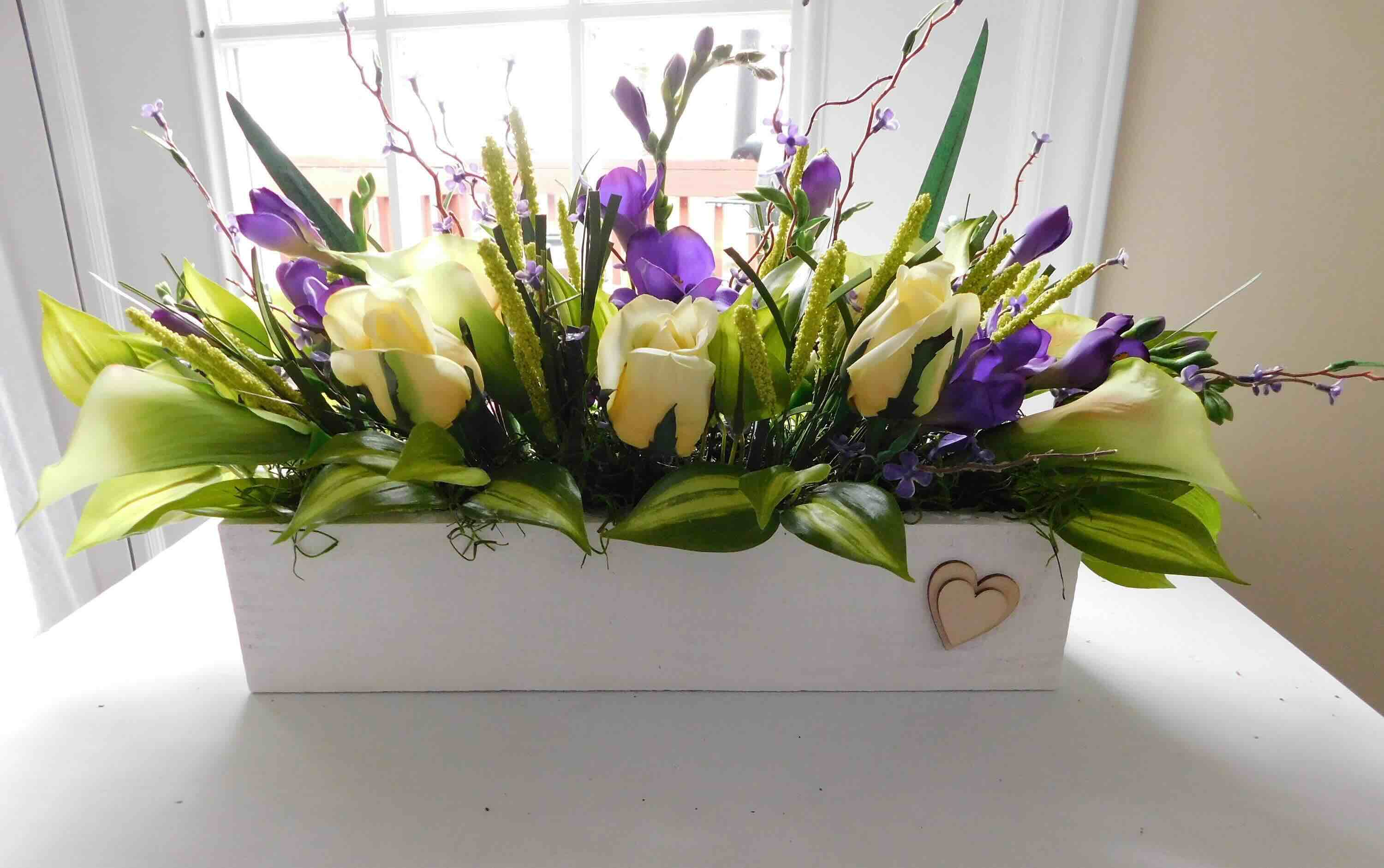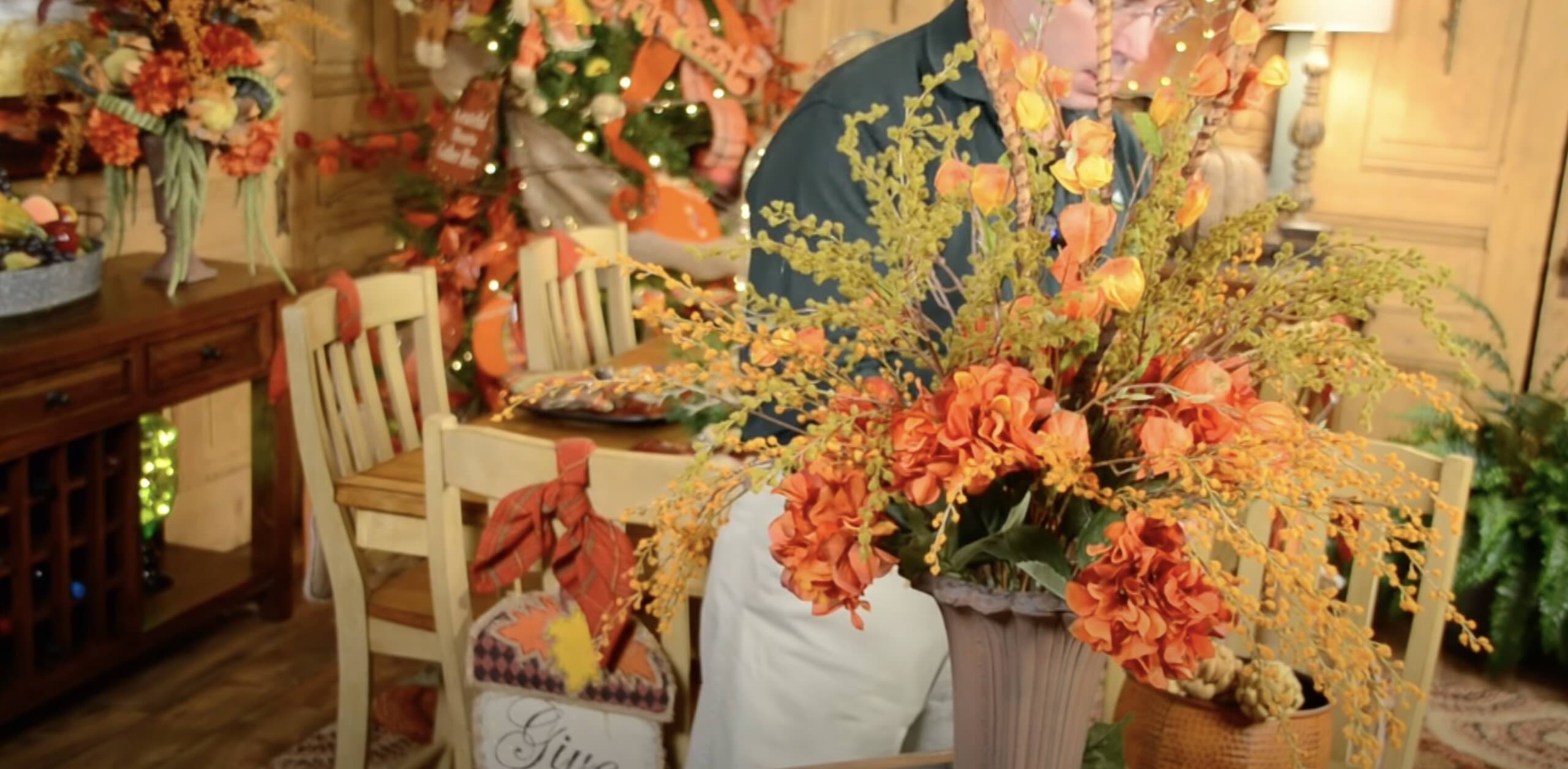Home>Dining>Table Decor>How To Clean Floral Arrangements


Table Decor
How To Clean Floral Arrangements
Modified: January 19, 2024
Discover the best methods for cleaning and maintaining your table decor, including floral arrangements, with our step-by-step guide. Keep your centerpiece looking fresh and vibrant for any occasion.
(Many of the links in this article redirect to a specific reviewed product. Your purchase of these products through affiliate links helps to generate commission for Storables.com, at no extra cost. Learn more)
Introduction
Floral arrangements are beautiful and versatile decorations that can add a touch of elegance and vibrancy to any space. Whether you have fresh flowers, silk flowers, dried flowers, or artificial flowers, keeping them clean and well-maintained is essential for their longevity and visual appeal. Proper cleaning techniques can help preserve the beauty and freshness of your floral arrangements, allowing you to enjoy their beauty for a longer period of time.
In this article, we will guide you through the process of cleaning different types of floral arrangements, including artificial, silk, dried, and fresh flowers. We will also provide tips on how to preserve and maintain your floral arrangements to ensure they continue to look their best. So grab your cleaning supplies and let’s get started!
Key Takeaways:
- Proper cleaning techniques and regular maintenance are essential for preserving the beauty and longevity of floral arrangements, whether they are artificial, silk, dried, or fresh flowers.
- By following specific cleaning methods tailored to each type of floral arrangement, you can ensure that your arrangements stay fresh, vibrant, and visually appealing for as long as possible.
Read more: How To Arrange Ikebana Floral Arrangements
Gathering the Necessary Supplies
Before you begin cleaning your floral arrangements, it’s important to gather all the necessary supplies. Having the right tools and cleaning products will make the task much easier and more effective. Here are some essential items you will need:
Soft-bristle brush:
A soft-bristle brush, such as a paintbrush or makeup brush, is perfect for removing dust and debris from delicate petals and leaves without causing any damage.
Compressed air:
Compressed air can be used to blow away dust and dirt from hard-to-reach areas of your floral arrangement, such as intricate crevices or delicate petals.
Mild detergent or floral cleaner:
Depending on the type of flowers and materials used in your arrangement, you may need a mild detergent or floral cleaner to remove stubborn stains or dirt. Make sure to choose a gentle and non-abrasive cleanser to avoid any damage to the flowers or foliage.
Read more: How To Sell Floral Arrangements
Microfiber cloth:
A microfiber cloth is perfect for gently wiping down the surfaces of artificial or silk flowers. It is soft, lint-free, and won’t leave any scratches or residue on your arrangements.
Water spray bottle:
A water spray bottle filled with clean water can be used to lightly mist fresh flowers, helping to revitalize them and remove any dust particles on their petals.
Protective gloves:
Wearing protective gloves is a good idea, especially when working with fresh flowers or using cleaning solutions. This will protect your hands from any potential skin irritation.
Once you have gathered all these supplies, you’re ready to start cleaning your floral arrangements. Remember to handle them with care and avoid using harsh chemicals or excessive force, as this can damage the flowers or foliage. Now, let’s move on to the next step: removing dust and debris from your arrangements.
Removing Dust and Debris
Dust and debris can accumulate on floral arrangements over time, dulling their appearance and making them look less vibrant. Before proceeding with any cleaning method, it’s important to remove as much dust and debris as possible. Here’s how:
Read more: How To Dry Floral Arrangements
Using a Soft-bristle Brush:
Gently brush the petals, leaves, and any other surfaces of your floral arrangement with a soft-bristle brush. Make sure to brush in a light, sweeping motion to avoid damaging delicate flowers or foliage. Pay attention to hard-to-reach areas, such as tight crevices or intricate designs, and gently brush away any dust or debris that may have settled there.
Using Compressed Air:
If there are hard-to-reach areas or intricate details in your floral arrangement, you can use compressed air to blow away dust and dirt. Hold the can of compressed air a few inches away from your arrangement and use short bursts to dislodge any debris. Be careful not to use too much pressure as it may damage delicate petals or displace the flowers.
Inspecting for Loose or Damaged Parts:
While removing dust and debris, take the opportunity to inspect your floral arrangement for any loose or damaged parts. Check if any flowers or leaves need to be reattached or if there are any broken stems that require repair. Making these fixes early on will help ensure the longevity of your arrangement.
After going through these steps, your floral arrangement should be free from most of the visible dust and debris. However, if you notice stubborn stains or dirt that require further cleaning, don’t worry. The next sections will guide you through the specific cleaning methods for different types of floral arrangements, including artificial, silk, dried, and fresh flowers. Let’s dive in!
Cleaning Artificial Flowers
Artificial flowers are a popular choice for floral arrangements because they offer beauty that lasts indefinitely. To keep your artificial flowers looking fresh and vibrant, regular cleaning is essential. Here’s how you can clean artificial flowers effectively:
Read more: What Are Floral Arrangements
Dusting with a Soft-bristle Brush:
Start by gently dusting the artificial flowers with a soft-bristle brush to remove any loose dirt or debris. Use a light touch and be careful not to bend or break the delicate stems or petals. For better access, you can also remove the flowers from the arrangement and brush them individually.
Using Compressed Air:
If there are hard-to-reach areas or intricate details, such as artificial leaves or petals with creases, use compressed air to blow away dust. Hold the can of compressed air a few inches away from the flowers and use short bursts to dislodge any debris. This method is especially useful for removing dust from small crevices or hard-to-clean spots.
Cleaning Fabric Flowers:
If your artificial arrangement contains fabric flowers, you can spot clean them by gently dabbing a cloth dampened with mild detergent or floral cleaner. Be sure to test this method on a small and inconspicuous area first to ensure it doesn’t cause any damage or discoloration. Allow the flowers to air dry before returning them to the arrangement.
Dunking in Soapy Water:
For more stubborn dirt or stains on plastic or silk artificial flowers, you can clean them by gently dunking the entire flower or arrangement in a basin of warm water mixed with a small amount of mild detergent. Swish the flowers around gently to loosen any dirt, and then rinse them thoroughly with clean water. Allow them to air dry completely before placing them back in the arrangement.
Read more: How To Ship Floral Arrangements
Using a Hairdryer:
After cleaning, you can use a hairdryer on the cool or low heat setting to speed up the drying process, especially for artificial arrangements with fabric flowers. Hold the hairdryer a few inches away from the flowers and gently blow air over them to quickly evaporate any remaining moisture.
Regular cleaning will help keep your artificial flowers looking their best and maintain their longevity. Depending on the environment they are in, you may want to clean them every few months or as needed. Now, let’s move on to cleaning silk flowers.
Cleaning Silk Flowers
Silk flowers are a popular choice due to their realistic appearance and low maintenance. Although they may not require as much care as fresh flowers, they still need proper cleaning to keep them looking their best. Here’s how you can clean silk flowers effectively:
Read more: What Are Floral Arrangements
Dusting with a Soft-bristle Brush:
Begin by gently dusting the silk flowers with a soft-bristle brush to remove any loose dirt or debris. Use a light touch and be careful not to disrupt the delicate petals or leaves. Take extra care when cleaning any delicate or intricate areas to avoid damaging the silk material.
Vacuuming with a Brush Attachment:
For a more thorough cleaning, you can use a vacuum cleaner with a brush attachment to remove dust and dirt from your silk flowers. Hold the brush attachment a few inches away from the flowers and use a gentle, sweeping motion to vacuum up any loose particles. Avoid pressing too hard or using a high suction setting to prevent damaging the flowers.
Read more: How To Make Memorial Floral Arrangements
Spot Cleaning Stains:
If you notice any stains or spills on the silk flowers, you can spot clean them by lightly dabbing the affected area with a cloth dampened with a mild detergent or floral cleaner. Make sure to test the cleaner on a small and inconspicuous area first to ensure it doesn’t cause any discoloration or damage. After spot cleaning, blot the area with a clean, dry cloth to remove excess moisture.
Using a Gentle Soaking Method:
For more stubborn stains or overall cleaning, you can use a gentle soaking method. Fill a basin with lukewarm water and a small amount of mild detergent. Submerge the silk flowers in the soapy water and gently swish them around to loosen any dirt or stains. Avoid squeezing or wringing the flowers to prevent damage. Rinse the flowers with clean water and pat them dry with a soft towel or let them air dry.
Read more: How To Ship Floral Arrangements
Using a Hairdryer:
Once the silk flowers are clean and damp, you can use a hairdryer on the cool or low heat setting to speed up the drying process. Hold the hairdryer a few inches away from the flowers and gently blow air over them until they are completely dry. Make sure not to use a high heat setting, as it can cause the silk material to warp or melt.
Regular cleaning will help maintain the beauty and longevity of your silk flowers. Depending on the environment they are in, you may want to clean them every few months or as needed. Now, let’s move on to cleaning dried flowers.
Cleaning Dried Flowers
Dried flowers are a popular choice for their timeless beauty and long-lasting appeal. However, they require special care and attention during the cleaning process to prevent damage. Here’s how you can clean dried flowers effectively:
Read more: How To Make Pumpkin Floral Arrangements
Gently Dusting with a Soft-bristle Brush:
Start by gently dusting the dried flowers with a soft-bristle brush to remove any loose dirt or debris. Use a light touch and be careful not to disturb the delicate petals or stems. Pay extra attention to areas where dust tends to accumulate, such as the petals and crevices.
Using Compressed Air:
If there are hard-to-reach areas or intricate details, you can use compressed air to blow away dust from the dried flowers. Hold the can of compressed air a few inches away from the flowers and use short bursts to dislodge any debris. This method is particularly useful for cleaning delicate dried flower arrangements with intricate designs or tight spaces.
Avoiding Direct Water Contact:
Dried flowers are very fragile and can easily lose their shape or color when exposed to water. It’s best to avoid direct contact with water during the cleaning process, as it can cause the petals to wilt or become discolored. Instead, focus on dry cleaning methods to maintain the integrity of the dried flowers.
Read more: How To Ship Floral Arrangements
Using a Hairdryer:
If there are stubborn dust particles or debris stuck to the dried flowers, you can use a hairdryer on the cool or low heat setting to remove them. Hold the hairdryer a few inches away from the flowers and use a gentle, sweeping motion to blow away the particles. Make sure to keep the hairdryer at a safe distance to prevent any damage to the delicate petals or stems.
Read more: How To Make Contemporary Floral Arrangements
Displaying Properly to Minimize Dust:
To minimize the accumulation of dust on dried flowers, it’s important to display them in a location where they are less likely to collect dust. Avoid placing them near air vents, open windows, or high-traffic areas. Additionally, periodically rotate or gently shake the arrangement to remove any settled dust.
Cleaning dried flowers requires a delicate touch and a focus on dry cleaning methods. With proper care and maintenance, your dried flower arrangements will continue to bring beauty and elegance to your space. Now, let’s explore how to clean fresh flowers.
Cleaning Fresh Flowers
Fresh flowers are a delight to have in your home or office, but they require regular cleaning to remove dirt, bacteria, and other impurities. Proper cleaning not only keeps your flowers looking fresh and vibrant but also helps prolong their life. Here’s how you can clean fresh flowers effectively:
Removing Outer Petals:
Start by carefully removing any outer petals that are wilted, discolored, or damaged. This will not only improve the appearance of your bouquet but also allow you to focus your cleaning efforts on the healthier flowers.
Gently Rinsing Under Water:
Fill a basin or sink with lukewarm water and gently immerse the stems and flower heads in the water. Gently swirl the flowers around to remove any dirt or debris. Avoid using excessively cold or hot water, as it can shock the flowers and shorten their lifespan.
Read more: How Tall To Make Floral Arrangements
Trimming the Stems:
While the flowers are still submerged in water, trim about an inch off the bottom of each stem at a 45-degree angle. This will remove any dried or damaged sections, allowing the flowers to better absorb water and nutrients. Use clean, sharp scissors or pruning shears for a clean cut.
Removing Leaves:
Remove any leaves that will be submerged in the water as they can promote bacterial growth. These submerged leaves can deteriorate quickly and contaminate the water, shortening the lifespan of your fresh flowers.
Preserving Flower Heads:
To keep the flower heads looking fresh and vibrant, you can lightly mist them with water using a spray bottle. This will help remove any dust or dirt and revitalize the petals. Be sure to use clean water and avoid spraying the blooms excessively to prevent damage.
Drying the Flowers:
After cleaning, gently pat the flowers dry with a clean, absorbent towel. Avoid rubbing or squeezing the petals too hard, as this can cause damage. If possible, let the flowers air dry in a cool, well-ventilated area before placing them back in a vase or arrangement.
Regular cleaning and maintenance will help ensure that your fresh flowers stay fresh and beautiful for as long as possible. Remember to change the water in the vase every few days and trim the stems every few days to promote water uptake. With proper care, your fresh flowers will continue to brighten up your space with their natural beauty. Now, let’s move on to the final section: preserving and maintaining floral arrangements.
Read more: How To Make Easter Floral Arrangements
Preserving and Maintaining Floral Arrangements
Preserving and maintaining your floral arrangements is crucial to keep them looking their best and extending their lifespan. With proper care and attention, you can enjoy the beauty and freshness of your arrangements for a longer period of time. Here are some tips to preserve and maintain your floral arrangements:
Keep Flowers Hydrated:
One of the key factors in maintaining fresh flowers is to keep them hydrated. Ensure the vase is filled with clean water and regularly change it every two to three days. If possible, use flower preservative in the water to extend the life of the flowers. Trim the stems regularly, about half an inch, to facilitate water absorption.
Place in the Right Environment:
Find an ideal location for your floral arrangement. Avoid placing them in direct sunlight or near heat sources, such as radiators, as this can cause the flowers to wilt quickly. Similarly, keep them away from cold drafts or air conditioning vents, which can dry out the flowers.
Remove Wilting Flowers:
As you enjoy your floral arrangement, remove any flowers that start to wilt or show signs of decay. This will not only improve the overall appearance of the arrangement but also prevent the spread of bacteria and premature wilting of other flowers.
Read more: How To Pick Floral Arrangements For Weddings
Dust and Clean Regularly:
To maintain the visual appeal of your floral arrangement, dust it regularly using a soft-bristle brush or compressed air. This will help remove any accumulated dust or debris and keep the arrangement looking fresh. For artificial or silk arrangements, refer to the specific cleaning methods outlined earlier in the article.
Preserve Dried Flowers:
If you have a dried flower arrangement, you can preserve it by spraying it with a clear floral sealant. This will help protect the flowers from moisture and slow down the natural fading process. Additionally, keep dried flowers away from direct sunlight and humid environments to maintain their color and shape.
Enjoy and Appreciate:
Lastly, take the time to enjoy and appreciate the beauty of your floral arrangements as you set your table. Not only do they add aesthetic value to your space, but they also have the power to uplift your mood and create a positive atmosphere. Take a moment to breathe in their lovely fragrance and admire the intricate details of each flower.
By following these tips, you can ensure that your floral arrangements stay fresh, vibrant, and visually appealing for as long as possible. Remember that each type of floral arrangement requires specific care, so tailor your maintenance routine accordingly. Now go ahead and showcase your stunning floral arrangements with pride!
Conclusion
Keeping your floral arrangements clean and well-maintained is essential for preserving their beauty and ensuring their longevity. Whether you have artificial, silk, dried, or fresh flowers, proper cleaning techniques and regular maintenance will help them stay fresh and vibrant for as long as possible.
By gathering the necessary supplies, such as soft-bristle brushes, compressed air, mild detergent or floral cleaner, microfiber cloths, and water spray bottles, you can effectively clean your floral arrangements without causing any damage.
Start by removing dust and debris using a soft-bristle brush or compressed air. This step will leave your arrangements looking cleaner and more refreshed.
For artificial flowers, gentle brushing and spot cleaning with mild detergent or a dunking method can effectively remove dirt and stains. Additionally, using a hairdryer on low heat or cool setting can help speed up the drying process.
Silk flowers require delicate cleaning methods, such as gentle brushing, vacuuming with a brush attachment, spot cleaning stains, or using a gentle soaking method. Using a hairdryer on the cool or low heat setting can help dry the flowers without causing any damage.
Dried flowers should be handled with care. Lightly dust them with a soft-bristle brush or use compressed air to remove dust from hard-to-reach areas. Avoid direct water contact and instead focus on dry cleaning methods. A hairdryer on a low temperature setting can help remove persistent dust particles.
Fresh flowers require regular cleaning and maintenance. Remove outer wilting petals, gently rinse under water, trim the stems at a 45-degree angle, and remove any submerged leaves. Preserve the flower heads by lightly misting with clean water and pat them dry. Remember to change the water regularly and trim the stems to promote water uptake.
Lastly, preserving and maintaining your floral arrangements involves placing them in the right environment, dusting and cleaning regularly, preserving dried flowers, and simply enjoying and appreciating their beauty.
By implementing these cleaning and maintenance techniques, you can ensure that your floral arrangements continue to bring joy, elegance, and a touch of nature to your space for many days to come. Embrace the beauty of your arrangements and allow them to be a centerpiece of beauty in your home or any other setting.
So, bring out your brushes, cleaning products, and a caring spirit, and let your floral arrangements shine with cleanliness and radiance!
Frequently Asked Questions about How To Clean Floral Arrangements
Was this page helpful?
At Storables.com, we guarantee accurate and reliable information. Our content, validated by Expert Board Contributors, is crafted following stringent Editorial Policies. We're committed to providing you with well-researched, expert-backed insights for all your informational needs.






0 thoughts on “How To Clean Floral Arrangements”